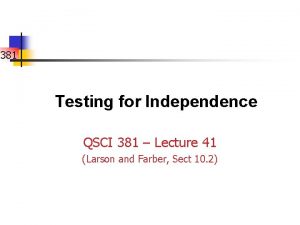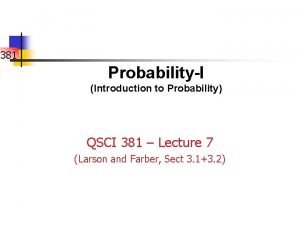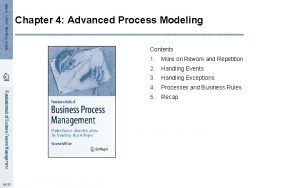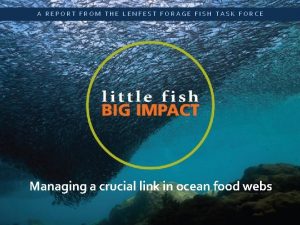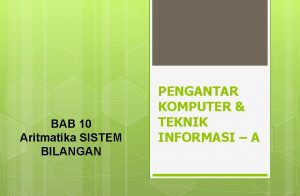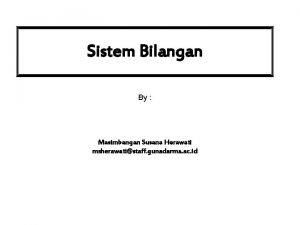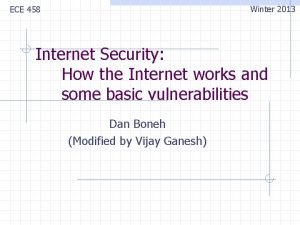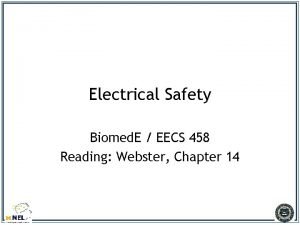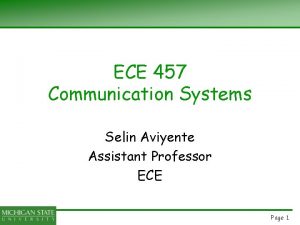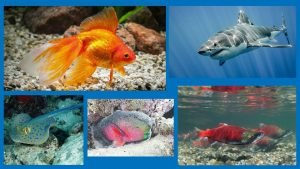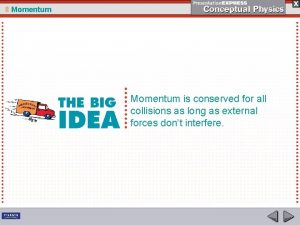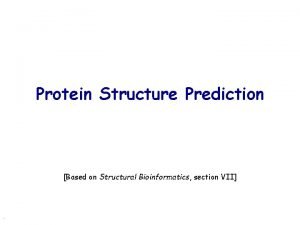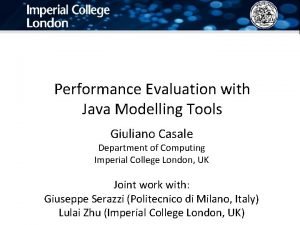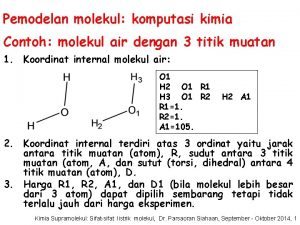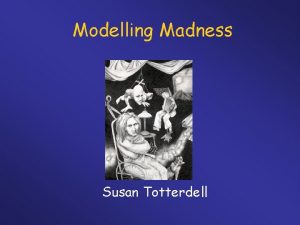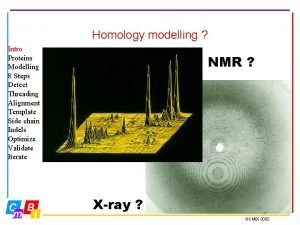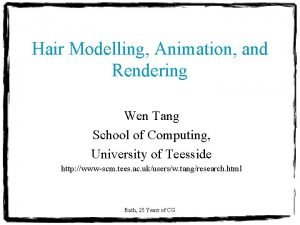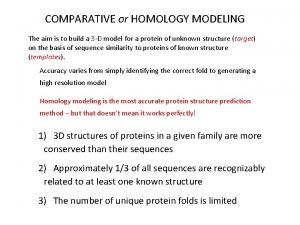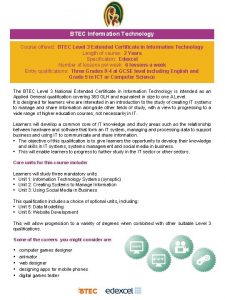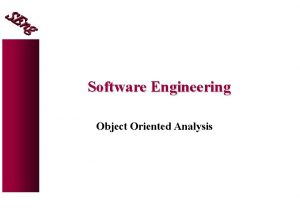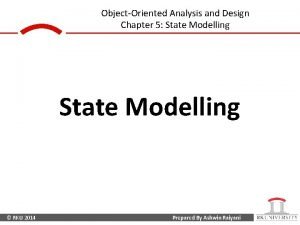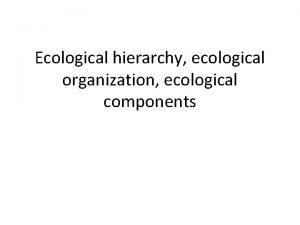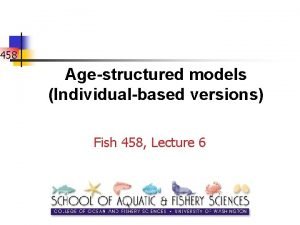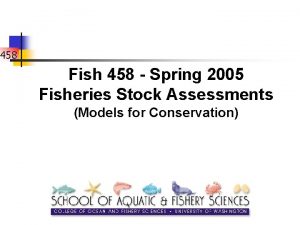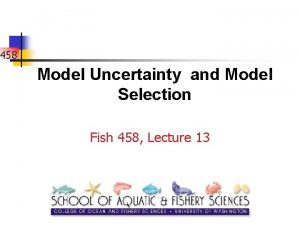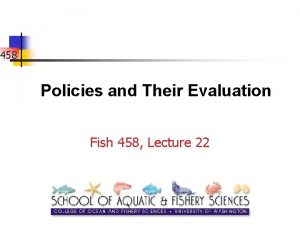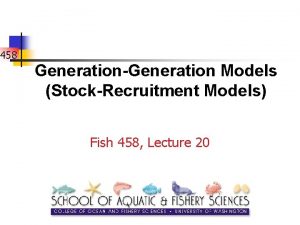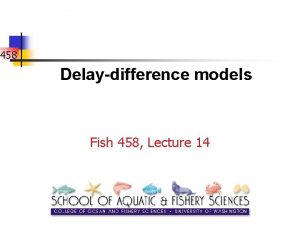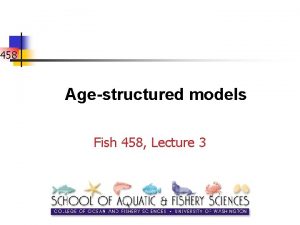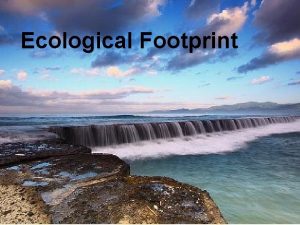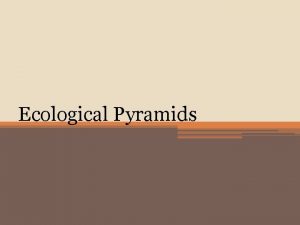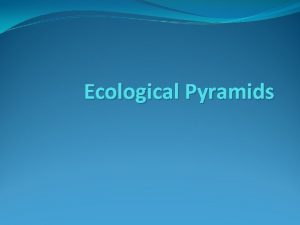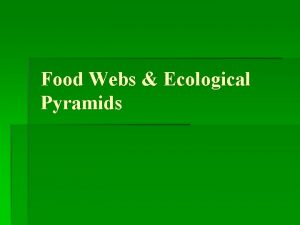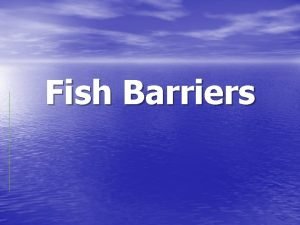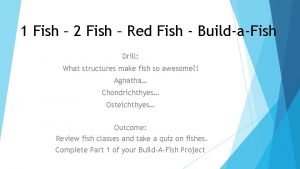FISH 458 QSCI 458 2020 Advanced ecological modelling


































- Slides: 34

FISH 458 / QSCI 458 (2020) Advanced ecological modelling: applying ecological models to manage and conserve natural resources Instructor: Trevor A. Branch tbranch@uw. edu @Trevor. ABranch https: //fish. uw. edu/faculty/trevor-branch/

Class web site https: //canvas. uw. edu/courses/1290894/assignments/syllabus

This is a methods course • The key purpose is to teach you how to implement models useful for management using three disciplines: • Modeling: how to describe hypotheses • Statistics : how to compare models to data • Simulation and programming: how to implement models – Excel (weeks 1 -4): fitting models to data, manipulating data – R (weeks 5 -10): automate tasks, speed up computing, generalize

Class logistics Classes: 10: 30 -11: 20 am MWF Computer labs: 1: 00 -2: 50 pm Thursdays Homework due: 9: 00 pm Thursdays (first one 9 April) Midterms: 6 May and 5 June (during lecture time) Lab exam: 4 June (during lab period) Instructor office hours: during lecture period, during labs, or on request, tbranch@uw. edu Grader: John Trochta, johnt 23@uw. edu

Grading • • Mid term II Lab exam Assignments 15% 15% 50% – Four one-week assignments each 5% of the total grade – Three two-week assignments each 10% of the total grade • Lecture quizzes and lab handins 5%

University policy on plagiarism and misconduct “Plagiarism, cheating, and other misconduct are serious violations of the student conduct code. You should know and follow the UW's policies on cheating and plagiarism. Any suspected cases of academic misconduct will be handled according to UW regulations. More information, including definitions and examples, can be found in the Faculty Resource for Grading and the Student Conduct Code (WAC 478 -121). ”

Recommended books • Hilborn R & Mangel M (1997) The ecological detective: confronting models with data, Princeton University Press, Princeton, New Jersey, 315 pp. – For understanding model fitting to data, AIC, likelihoods, Bayesian methods • Matloff N (2011) The Art of R Programming – For R programming, somewhat advanced; especially relevant are chapters 1 -4, 8 -9, and 11 – Free online version: http: //heather. cs. ucdavis. edu/~matloff/132/NSPpart. pdf

Course materials • Videoed lectures and Power. Point presentations under Modules outline key material • Excel sheets in Files allow you to experiment with models presented in the lectures • R code allows you to reuse and modify models, and embed them in your own programs • Occasional handouts provide detailed derivations and proofs (for interest)

Online lecture plan • Video lectures recorded using Panopto will be posted ahead of time under Modules together with the Power. Point, Excel files, R code etc. • There will be one or more online quizzes for each lecture to ensure that you have watched the material • 10: 30 -11: 00 am MWF I will be online in a Zoom session to answer questions • 11: 00 -11: 20 am MWF I will be online in Zoom leading discussion groups. Please all sign in during this time on Zoom.

Online lab plan • Videos of the lab pieces in Panopto will be posted ahead of time under Modules together with the necessary materials • You will need to upload your lab workings (whether incomplete or not) after each lab, for credit • 1: 00 -2: 50 pm Thursdays I will be online in a group Zoom session to answer any questions about the lab and do trouble-shooting

Plan for week 1 • • • General modeling concepts and definitions Models with no age structure Age-structured models Thursday lab: intro to R programming Homework for 9 April: R programming exercises

What is a model? Source: http: //aero. konelek. com/aerodynamics/ae rodynamic-analysis-and-design • • Source: http: //www. scienceclarified. com/Bi. Ca/CAD-CAM. html#b A simplified abstraction of a more complex object Simulates real-life in a computer A model airplane has some of the characteristics Boeing now tests new planes using computer models instead of physical models of airplanes and wings

Architectural models Source: http: //www. prlog. org/10478600 -high-qualityarchitectural-details-architectural-detail-drawings. html Source: http: //www. archiexpo. com/prod/arc-technology/2 darchitecture-cad-software-1701 -91443. html

E. O. Wilson Source: en. wikipedia. org/wiki/E. _O. _Wilson Experimentalist models Bob Paine Source: http: //histories. naturalhistorynetwor k. org/ conversations/anemone-like • Model organisms: Drosophila, zebrafish, mice • Field ecologists interested in studying a phenomenon should look for an appropriate model • E. O. Wilson said if he was beginning again he would work on micro-organisms • Bob Paine: long-term studies of intertidal communities on Tatoosh Island Kimmel et al. (1995) Developmental Dynamics 203: 253 -310.

Computer models Saye RI & Sethian JA (2013) Multiscale modeling of membrane rearrangement, drainage, and rupture in evolving foams. Science 340: 720 -724 Movie of simulation: http: //www. sciencemag. org/content/suppl/2013/05/08/340. 6133. 720. DC 1/1230623 s 4. mov

Uses of computer models in ecology • To explore consequences of alternative hypotheses: How likely is extinction? How much can I harvest? • To clarify ideas about relationships within a system (food web models) • To ask how well hypotheses are supported by data (which model is best? ) • To design management programs (which rules work best? ) • To find optimum management rules (what is the maximum sustainable yield? )

General modeling concepts

Statistical models • Predicted values depend upon some observed values and some parameters (constants) • Multiple linear regression: Observed values Model prediction Parameters to estimate

Dynamic models • Observed variables depend upon past conditions of the system, constants, and any perturbations • Exponential growth: Population at start Numbers in next time step Numbers at time t Increase rate

Components of dynamic models • • • State variables Parameters Forcing functions Rules of change State variables in the future depend upon the current state, the parameters (constants), any external perturbations (the forcing functions), and the rules of change

State variables • The complete description of the current state of the system—those elements that change over time—complete enough that you can “rebuild” the system with this amount of information • Examples: number of animals in the population, age structure of a population, presence or absence of species in a community matrix, etc.

Parameters • Do not change over time and are the constants that describe the rates or limits • Intrinsic rate of growth, carrying capacity, survival rate, fecundity rate, movement rate, etc.

Forcing functions • Natural or anthropogenic factors that affect the state variables • Climate impacts on survival or reproduction • Harvesting • These are “external” to the model—we do not need to describe the dynamics of these factors

Rules of change The equations that describe how the state variables change over time in relation to the current values of the state, the parameters, the forcing functions. Rules of change (equations) State variables next time step State variables (e. g. numbers) Forcing functions (e. g. catch) Parameters (e. g. rate of increase)

Logistic growth (deterministic, dynamic, lumped model) Numbers next year are numbers this year plus net production minus removals Surplus production Population size time t+1 Intrinsic (maximum) rate of increase Catch in time t Carrying capacity

Logistic growth 1. What are the state variable(s)? 2. What are the parameter(s)? 3. What are the forcing function(s)? 4. What are the rules of change?

Answers • The state variable is the population size, Nt • The parameters are the intrinsic rate of increase r, and the carrying capacity K • The forcing function is the catch, Ct • There is one rule of change: the logistic equation

Components of rules of change • Logical relationships – Statements that are true by definition – numbers next year = numbers this year + births – deaths + immigration – emigration – Also known as tautologies • Functional relationships – Specify the relationship between a rate and a state variable or something related to a state variable (survival as a function of density, recruitment as a function of spawning biomass)

For logistic growth model • A logical relationship – number alive next year is number alive this year plus net production minus catch • The functional relationship – net production =

Discrete vs. continuous models Discrete models use difference equations and jump from one time step to the next Continuous models use differential equations and assume continuous change over time

Continuous logistic model This equation is quite different to the discrete model 1 Logistic. xlsx – Deterministic continuous Source: Mangel M (2006) The theoretical ecologist's toolbox, Cambridge University Press, Cambridge

How to decide between discrete and continuous models • Are the processes discrete or continuous? • Discrete models are usually better for individualbased models • For most computer software discrete models are easier • Continuous models provide analytical solutions for simple problems • Tradition

Deterministic or stochastic models • Do we allow for random events or not • Deterministic model • A stochastic version where wt is a random variable from a normal distribution with mean 0 and standard deviation s 1 Logistic. xlsx – Deterministic discrete 1 Logistic. xlsx – Stochastic discrete

1 Logistic. xlsx – Deterministic discrete 1 Logistic. xlsx – Stochastic discrete 1 Logistic. xlsx – Discrete oscillations 1 Logistic. xlsx – Continuous
 One fish two fish red fish blue fish ride
One fish two fish red fish blue fish ride Qsci 381
Qsci 381 Qsci 381
Qsci 381 One fish, two fish, blowfish, blue fish
One fish, two fish, blowfish, blue fish Characteristics of actinopterygii
Characteristics of actinopterygii Exercise 4
Exercise 4 Ecological importance of fish
Ecological importance of fish Komplemen 9 dari 458 =…
Komplemen 9 dari 458 =… Penjumlahan bilangan octal 45 (8) + 17 (8) =
Penjumlahan bilangan octal 45 (8) + 17 (8) = Ece 458
Ece 458 Eecs 458
Eecs 458 Ece458
Ece458 Bony vs cartilaginous fish
Bony vs cartilaginous fish Fishbony
Fishbony A big fish swims up and swallows a small fish at rest
A big fish swims up and swallows a small fish at rest Market forms of tilapia
Market forms of tilapia What is technological modelling
What is technological modelling Energy based model
Energy based model Java modelling tools
Java modelling tools Molecular modelling laboratory
Molecular modelling laboratory Modelling madness what's new
Modelling madness what's new Rich interaction
Rich interaction Revolver formula min max
Revolver formula min max Advantages and disadvantages of wireframe modelling
Advantages and disadvantages of wireframe modelling Homology modelling steps
Homology modelling steps Hair modelling
Hair modelling Edlc life cycle
Edlc life cycle Homology modelling steps
Homology modelling steps Mechanical system modeling examples
Mechanical system modeling examples Modeling rich interaction in hci
Modeling rich interaction in hci Unit 5 data modelling assignment 2
Unit 5 data modelling assignment 2 Tools for structured analysis
Tools for structured analysis Algorithmic cost modelling
Algorithmic cost modelling Class responsibility collaborator modelling
Class responsibility collaborator modelling State modelling
State modelling

